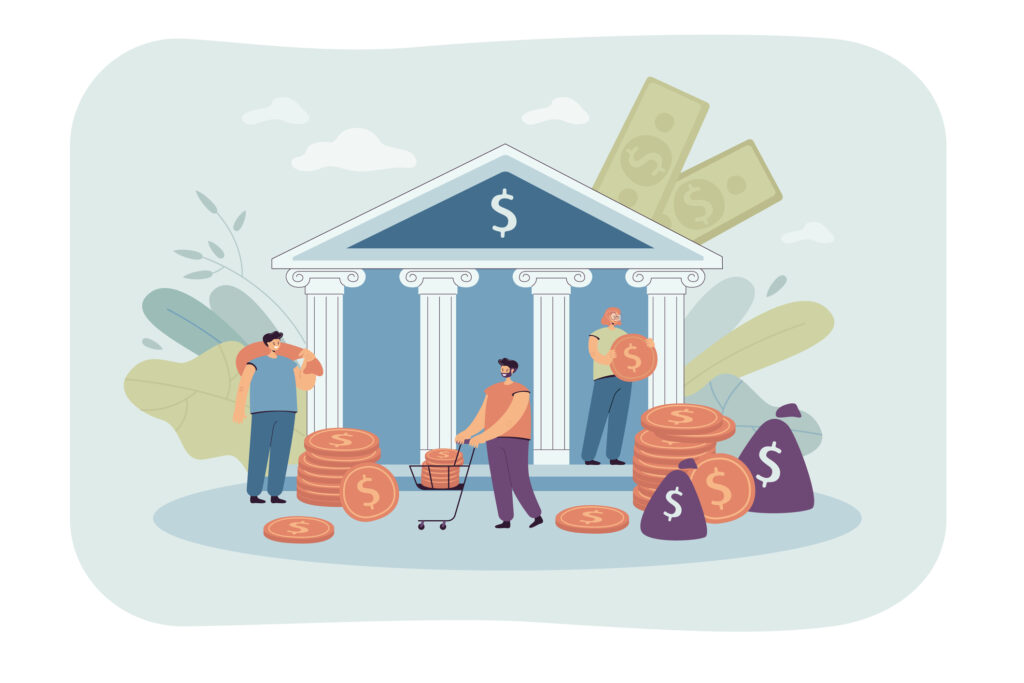
Grades 9-12

Don't have an account yet? Sign up for free
Don't have an account yet? Sign up for free
Students will be able to:

In this economics activity, students will compare immediate benefits to long-term costs of fiscal stimulus during recessions.
Warm-Up
As the COVID-19 pandemic continues into 2021, more stimulus or aid will be considered. While the packages delivered in April of 2020 and January of 2021 provided welcome relief, any more spending bills will face increased scrutiny. Opponents of more spending often bring up the issue of increased debt that the spending brings. This lesson helps students understand the trade-offs between immediate benefits and potential future costs. Additionally, it emphasizes the examination of data to understand how troubling or not troubling additional debt might be to the economy by comparing things like today’s interest rates and interest payments by the government to those of the past.
Before beginning, decide whether to use the shorter or longer version of the readings. The longer version has three items for a group of students to analyze, the shorter version has two items. The shorter version has less information on the idea the future deficits and increases in the national debt are more likely to be caused by ongoing government programs and the aging of the U.S. society as opposed to one or two-time stimulus packages.
Begin the lesson by asking the students what steps has the U.S. federal government taken to help individuals, businesses, and local and state governments during the recent pandemic? (Some students will mention the CARES Act which included payments to individuals, the paycheck protection program that help small businesses, aid to larger industries like airlines, as well as state and local government aid.)
Tell the students that they will be analyzing the impact of government stimulus programs during recessions. In order to do so, they will need to have some background information.
Modeling
Open up the resource slides. Depending on the level and background of the students, go through Slides 2 to 6, reviewing the concepts as follows:
After reviewing or introducing the concepts, display Slide 6 and tell the students that the goals of the lesson are to answer, based on data, the questions listed on the Slide 7:
Group Activity
Display Slide 8. Tell the students that you will break them into six focus groups (four are illustrated in the diagram). Each focus group will examine data and information on one aspect of whether fiscal stimulus is a good idea. Display Slide 9 (or Slide 14 if using the shorter set of readings). Tell the students that each group’s data will help them answer one of the six questions. Once the focus groups have reviewed the data and discussed the question(s) posed with the data, the class will then form task groups in a jigsaw style. Suggested answers to the questions are provided in Appendix A to this lesson.
Tell the students each task group will have one member from each of the focus groups – although if the class is not easily divisible by six, then two members from the same focus group can be put into a task group. The goal is to have each focus group represented in a task group. Once in the task group, each student should relay the main question and summarize information discussed in their focus group to the other members of the task group. Display Slide 10. Tell the students once all members in the task group have relayed their information, the group should discuss and decide their answers for the final question: After weighing the immediate benefits of a stimulus against stimulus’s long-term costs, is a fiscal stimulus a useful tool to counteract the effects of the current Covid-19 recession?
After making sure the students understand the procedures, break the students into six focus groups and provide each group with a different reading (numbered 1 to 6) from Activity 1 (longer version) or Activity 3 (shorter version). Allow the focus groups approximately 20-30 minutes to discuss the information on their sheets. Most of the information is in the form of graphs, so the students will not have a heavy reading load. Monitor the groups and answer any questions they may have about the information.
After ensuring that the students have had adequate time to review the material, form groups of six members with one member (or two if needed) from each of the focus groups. (An alternative is to have a task group with less than six members; however, the task group will not have all information to consider.)
Hand out Activity 2 (or Activity 4 if using the shorter readings), which review the instructions, to each group (two copies per group should be enough). Allow the students 30 minutes to discuss the information provided by each member of the group and come to a consensus within their group as to the best answer for the final question displayed on Slide 10. Tell the students to have one member ready to report their findings to the class.
After ensuring that the students have had adequate time to come to a consensus, review the question on Slide 10 by asking a few of the groups what their consensus was. (Answers will vary.) As each group responds, ask some of them their responses to the focus questions as well. (Answers will vary.)
After all groups have participated, ask the class what they think the overall consensus, if any, is in the class. Encourage all students to provide their insights to the discussion. (Answers will vary.)
Slide 11 reviews the benefits and costs of a stimulus. Review the points with the students.
Tell the students that a lot of the costs of the stimulus depend on interest rates and interest payments. Display Slide 12, which asks questions about the long-term impacts of the stimulus. Ask the students the questions on the slide:
Conclude the lesson by noting the debate will continue beyond the pandemic as social issues such as healthcare, unemployment benefits, environmental protection will need funding through either tax increases or increased deficits. If desired, display Slide 13 the two political cartoons the represent different aspects of the debate. Ask the students what the first cartoon is trying to communicate. (The national debt has been caused by many things including past tax cuts. The cartoon suggests that Republicans are focusing on smaller things like unemployment benefits while ignoring tax cuts.) As the students what the second cartoon is trying to communicate. (The cartoon suggests that a large stimulus will worsen what is already a large national debt.)
Click on the link below to find a shorter activity based on this lesson.

Grades 9-12

Grades 9-12

Content Partner
Grades Higher Education, 9-12

Grades 9-12
